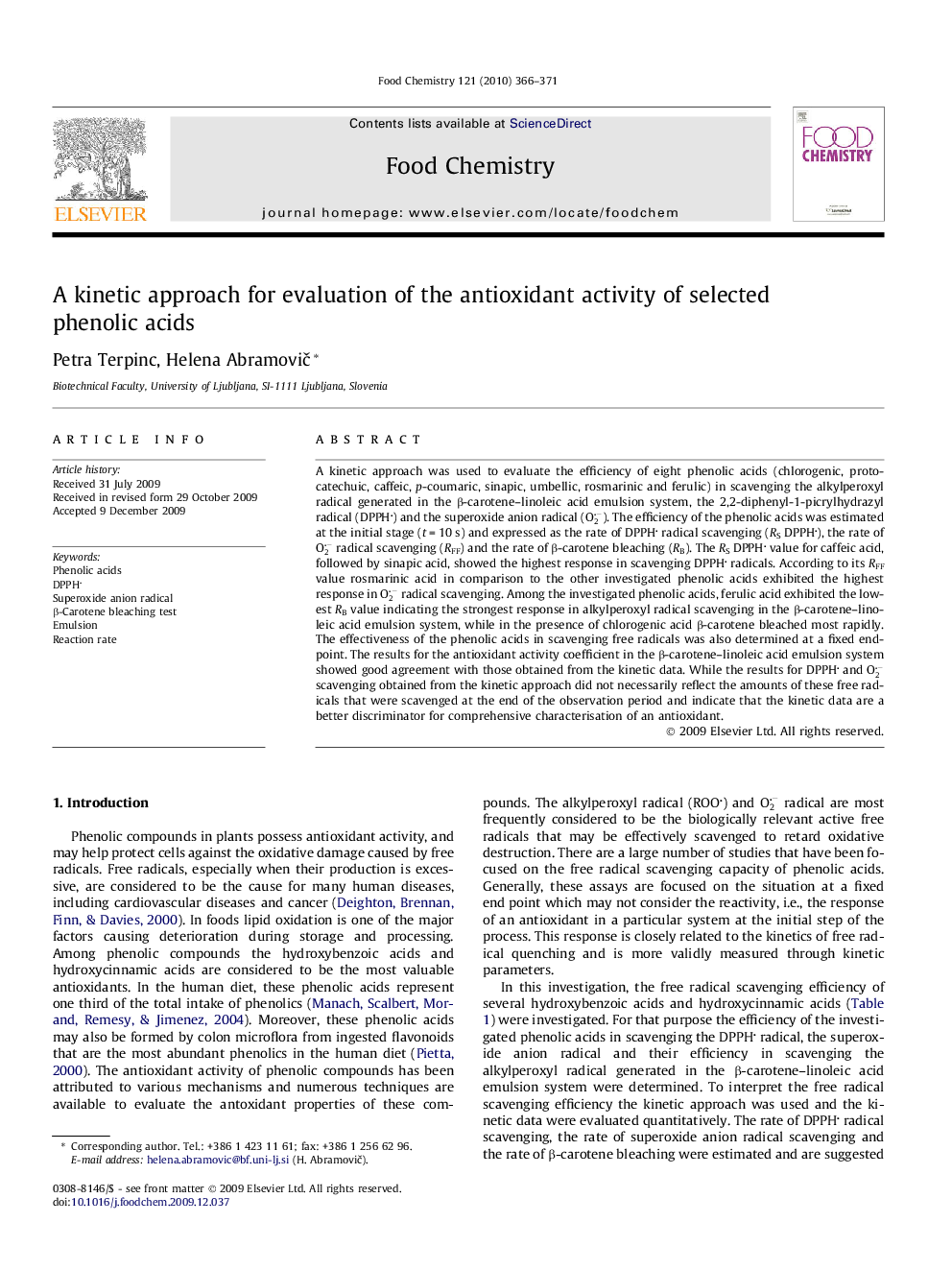| Article ID | Journal | Published Year | Pages | File Type |
|---|---|---|---|---|
| 1186826 | Food Chemistry | 2010 | 6 Pages |
A kinetic approach was used to evaluate the efficiency of eight phenolic acids (chlorogenic, protocatechuic, caffeic, p-coumaric, sinapic, umbellic, rosmarinic and ferulic) in scavenging the alkylperoxyl radical generated in the β-carotene–linoleic acid emulsion system, the 2,2-diphenyl-1-picrylhydrazyl radical (DPPH) and the superoxide anion radical (O2-). The efficiency of the phenolic acids was estimated at the initial stage (t = 10 s) and expressed as the rate of DPPH radical scavenging (RS DPPH), the rate of O2- radical scavenging (RFF) and the rate of β-carotene bleaching (RB). The RS DPPH value for caffeic acid, followed by sinapic acid, showed the highest response in scavenging DPPH radicals. According to its RFF value rosmarinic acid in comparison to the other investigated phenolic acids exhibited the highest response in O2- radical scavenging. Among the investigated phenolic acids, ferulic acid exhibited the lowest RB value indicating the strongest response in alkylperoxyl radical scavenging in the β-carotene–linoleic acid emulsion system, while in the presence of chlorogenic acid β-carotene bleached most rapidly. The effectiveness of the phenolic acids in scavenging free radicals was also determined at a fixed endpoint. The results for the antioxidant activity coefficient in the β-carotene–linoleic acid emulsion system showed good agreement with those obtained from the kinetic data. While the results for DPPH and O2- scavenging obtained from the kinetic approach did not necessarily reflect the amounts of these free radicals that were scavenged at the end of the observation period and indicate that the kinetic data are a better discriminator for comprehensive characterisation of an antioxidant.
